
Photo Report : HAF 115 Combat Wing - Souda's Vipers
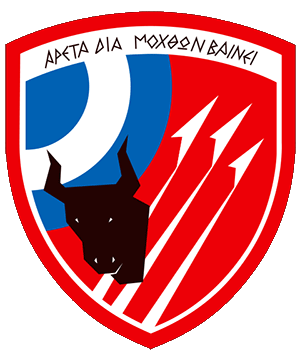
Souda's Vipers - HAF 115 Combat Wing
George Karavantos visited the Hellenic Air Force 115 Combat Wing at Souda Air Base at Chania Airport on the island of Crete.
HAF 115 Combat Wing
Crete, the largest of the Greek islands, in the southern Aegean Sea, is the home of 115 CW (Combat Wing - Pteriga Mahis) of the Hellenic Air Force, operating the Lockheed Martin F-16C/D Block 52+ from Souda Air Base or Chania Airport. With one of the most modern and advanced Viper fleets in Europe, 115 CW is comprised of two squadrons, 340 Mira “Alepou” (Fox) and 343 Mira “Asteri” (Star), along with the SMET (Operational Conversion Unit), “Assos” (Ace).
340 and 343 Squadrons
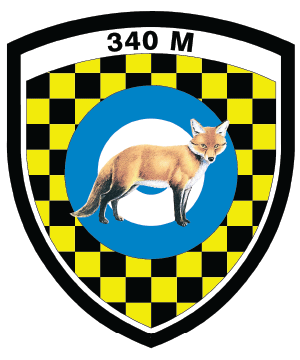
340 Squadron was established on 18th of April 1953 at the airfield occupied by 112CW in Elefsina. It was equipped at that time with the Republic F-84G aircraft. In September of the same year the Squadron was transferred to the 111 CW in Nea Anghialos. In May 1958 the unit’s aircraft were replaced by the newer and more advanced F-84F Thunderstreaks. On the 4th of February 1960, the unit was transferred to 115 CW in Souda from where it operates until today. Apart from its national defense duties, the Squadron was briefly declared an official NATO squadron under the name SkyFox. During the Turkish invasion in Cyprus in 1974, the Squadron was reinforced with jets from 338 and 339 Squadrons raising the total number of aircraft to 75 and formed three redeployment detachments which became later independent squadrons (3401: 347 Sq, 3402: 345 Sq and 3403: 346 Sq)
In August 1975, the unit started to accept the new and modern aircraft, Ling-Temco-Vought A-7H Corsair II. On June 10th 1977, it handed over 19 of its newly acquired aircraft to equip the 347 Sq in Larissa. In 1980 the Squadron received the first two-seaters TA-7H that were later ordered as a supplement to the previous order. On July 31st 1992, the Squadron received half the aircraft of 347 Squadron’s inventory. On the 30th of September 2001, a deactivation ceremony was conducted in Souda, while all the remaining Corsairs were handed over to 345 Sq. 50 years after its establishment, on March the 3rd 2003, the Squadron was reformed for the introduction of the new aircraft Lockheed Martin F-16C/D Block 52+ Fighting Falcon.
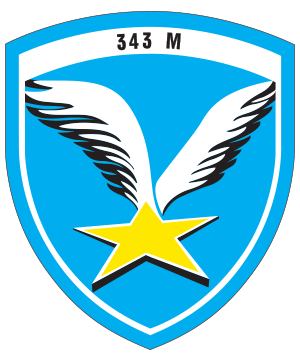
343 Squadron was first established in September of 1955 at Elefsina airbase and it was initially equipped with the North American F-86E Sabre in the day interception role. Six years later in 1961 the F-86D replaced the ‘E’ version, which offered the capability for night interception. The ‘Sabre Dog’ was operated by 343 Sq for a relatively short five year period and in March 1966 the squadron transitioned to the Northrop F-5A/B Freedom Fighter, with a primary role of day interception and a secondary role of air-to-ground strike. In 1974 the unit was moved to 113 CW at Macedonia Airport in Thessaloniki. These aircraft continued to serve 343 Sq for a period of 35 years until March 2001 when operations were temporarily suspended. On 21 July 2003 the 343 Sq re-entered operational status at Souda with F-16 C/D Block 52+ aircraft.
With the introduction of the F-16C/D Block 52+ aircraft, 115 CW entered a new era. The new jets introduced the capability of deep penetration due to the extended range that the conformal tanks incorporate, advanced night operations capability with the NVG systems and full integration of the Joint Helmet Mounted Cueing System along with the high-off bore sight missiles IRIS-T. Furthermore the pilots took advantage of the new data link system, the synthetic aperture mode of the radar and the new full color multi function displays inside the cockpit.
The first batch of Souda's Vipers arrived in 2002 making the HAF the first air force in the world to receive the Block 52+. The deliveries lasted until 2004 and both squadrons of the 115 Combat Wing received the same version. 337 Squadron from the 110 Combat Wing based in Larissa, received the rest of the order, after withdrawing its F-4E Phantom IIs.
Nowadays both Squadrons operate an almost equal number of F-16C single-seaters, (13 for 340 and 14 for 343) but with regards to the two-seaters 340 Sq has ten and 343 has seven F-16Ds. Both the 115 CW squadrons, 340 and 343, have specific, specialised roles that are not interchangeable. The current role of 340 Sq is precision day and night with tasking for the squadron being dependent on instructions received from the tactical headquarters with an approximate split of flight scheduling of 60% day operations and 40% night operations. 343 Sq has a primary role of interception and force protection with a secondary SEAD (Suppression of Enemy Air Defenses) role. In addition to their primary roles, both 340 and 343 Sq maintain the additional commitment to undertake readiness duties to defend their national airspace.
340 Sq currently uses a wide range of weapons: AIM-9M, AIM-120C-7 AMRAAM and AIM-2000 (IRIS-T) air-to-air missiles with GBU-10 Paveway II and GBU-24 III Laser Guided Bombs but also AGM-65 Maverick missiles utilised for precision strike.
343 uses AIM-9L, AIM-2000 (IRIS-T) and the AIM-120C AMRAAM in the air-to-air arena whilst the AGM-88B HARM is the weapon of choice in the anti-RADAR SEAD role. In terms of air-to-ground the aircraft carry also laser guided bombs and the AGM-154C JSOW (Joint Standoff Weapon).
Operational Conversion Unit
The training course for the new F-16 pilots consists of familiarization flights, Air to Air and Air to Ground sorties with advanced mission scenarios and lasts approximately 8 months and 60 sorties. Once the new pilots join the operational conversion unit (SMET), it then takes a further 8 months for them to become “Combat Ready”. The OCU also conducts refresher training for pilots returning to flying duties following a ground posting with the duration of this refresher training being dependant on the flying experience of the individual returning to flying duties.
F-16 Block 52+
The only main difference between Block 52+ and Block 52 is the addition of the CFTs (conformal fuel tanks), while the main difference between the Block 52 compared to the previously acquired Block 50 is the Block 52’s more powerful Pratt & Whitney F-100-PW-229, which delivers 29000lbs of thrust increasing maximum take-off weight. The P&W engine has longer and straight exhaust nozzle of carbon fiber, compared to the Block 50 F110-GE-129’s shorter and curved nozzle of titanium. In the inventory of HAF, the new Block 52+ had several other improvements over the Block 50, the major ones were:
- The upgraded radar V(9)
- Upgraded mission computer, navigation and targeting systems
- Ability to carry more modern weapons
- Upgraded cockpit with CMFD (Color Multifunction Display), upgraded HUD
- Joint Helmet Mounted Cueing System (JHMCS)
- Upgraded data transfer and distribution systems
All the Hellenic F-16s are equipped with the AN/APG-68 radar. The older Block 30 and 50 have the V(3) and V(7) versions respectively, while the later Block 52+ and 52M have the V(9). All are almost identical externally. The AN/APG-68V(9) radar of the Block 52+ provides both improved air-to-air and air-to-ground capabilities. These include a 30 percent increase in detection range, larger search volume and improved tracking performance, new Synthetic Aperture Radar (SAR) mode for the delivery of precision, all-weather, standoff weapons, plus improved Sea Surveillance and Ground Moving Target Indication modes. Overall, the V(9) offers about five times greater processing speed and ten times more memory compared to the previous AN/APG-68 versions.
The CFTs (conformal fuel tanks) give about 450 US gallons (1.700 lt) of extra fuel. These external tanks can be attached on top of the fuselage within 1 hour and they don't obstruct any service panel making them easy in everyday's use. Although the tanks do not reduce the maneuverability of the aircraft, when fitted the fly-by-wire control system limits the aircraft to a more restrictive envelope of flight.
The characteristic feature of all the two-seat F-16D Block 52+ and 52M is the dorsal spine. All the electronics housed behind the cockpit on the single-seat version of the F-16C Block 52+ were moved to the top of the spine to make room for the second seat of the F-16D. The rear cockpit can be occupied by either a Weapon System Operator (WSO) or an Instructor Pilot (IP) and can be configured for each with a single switch in the cockpit.
The HAF's F-16 Block 52M aircraft have also received Litton's ASPIS II electronic warfare suite (Advanced Self-Protection Integrated Suite) which has been internally mounted and includes the ALQ-187 I-DIAS jamming system and improved ALR-66VH (I) RWR. This system is going to be retrofitted to the F-16 Block 52+ of the HAF by Hellenic Aerospace Industry.
Aegean Ghost Camouflage
The color scheme of the HAF F-16s is known as the "Ghost" or “Aegean Ghost” scheme and is one of the most interesting in modern military aviation. This distinctive camouflage was first tested on several aircraft such as the Mirage F-1CG but was never used. It was adopted on some F-5As for a short period of time just before their retirement, but more extensively used on all the F-4E Phantom IIs after their AUP upgrade. All the F-16s in Hellenic service wear this scheme but in this case this a special coating has been applied.
This coating is a new technology called "Have Glass" which reduces the Radar Cross Section (RCS). The paint included in this Have Glass program is called Pacer Gem. Used on the later airframes (52+ and 52M), the coating alters the appearance of the paint visually. It is very rough to the touch and contains shiny flakes, almost like metal flake paint.
On the F-16 Block 52M the Have Glass III coating is much cleaner, but on the F-16 Block 52+ the Have Glass II coating has after all these years resulted in a distinctive grey and weathered camouflage. From my point of view this metallic, dirty looking paint looks wonderful on them!
Greek F-16 Blocks Visual Differences
All Greek Fighting Falcons, apart from their distinctive "Ghost" camouflage, have a tail fin root extension for the drag parachute. On there is also the probe of the ASPIS II for the rearward detection of incoming missiles.
All Hellenic F-16s except the Block 30s feature the AN/APX-113 IFF interrogator antennas in front of the canopy. The Block 30s are the only Greek F-16s which have a intercept light on the starboard side of the fuselage, just below and in front of the canopy.
Souda’s Vipers have a horizontal squadron flash at the top of their tail fin, this squadron pattern is also used for the scarf that pilots wear!
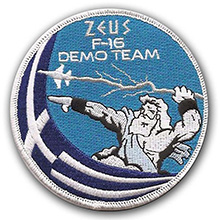
F-16 "Zeus"
Souda is also the home of the Hellenic Air Force's F-16 solo demo team, named "Zeus" which represents the father of the Olympian Gods of Greek mythology. The team utilizes an F-16C Block 52+ as the display aircraft, the only F-16 Demo with CFTs in Europe.
The effort to create an F-16 demo team began in 2009 when the Greek crew was trained by the Viper West F-16 demo team of the USAF. Two pilots of 115 CW, Captains Emmanuel Karahalios from 340 Sqn and Dimitrios Kontoulis from 343 Sqn were selected to become the first pilots. After almost a year, on 7 November 2010, the HAF's F-16 Demo Team flew its first official air show at Tanagra Air Base.
During the initial years there was no one particular aircraft for the displays. Later the F-16C s/n 537 which belonged to 340 Sqn was chosen as the demo aircraft and it initially received special markings only on its CFTs. Last year, F-16C s/n 523 also belonging to 340 Sqn received the full demo paintjob only a few days before RIAT 2015, where it made its first UK airshow appearance. Of course the jet is a fully operational aircraft and during our visit we saw it returning from a mission exercise.
Hellenic Air Force F-16 History
Greece became one of the many operating countries of the successful F-16 when the Greek government in 1989 decided to acquire 40 of the American fighters along with 40 French Mirage 2000 fighters in what was known at that time "The purchase of the Century". Since then Greece ordered additional F-16s increasing the total number to 170 aircraft, every time acquiring a newer and more advanced version of the F-16.
All started in November 1984 when the Greek Government expressed its interest to acquire 34 F-16C and six F-16D Fighting Falcons in order to replace the ageing F-5 Freedom Fighters. The agreement was signed in January 1987 under the name Peace Xenia I. The first aircraft arrived in Greece in November 1988 and deliveries lasted until October 1989. The Peace Xenia I F-16s were all Block 30 aircraft, powered by the General Electric F110-GE-100 turbofan.
A follow up order was agreed in April 1993, with a further 40 F-16C/Ds delivered under Peace Xenia II in 1997-98. These 32 C and 8 D models were Block 50 aircraft powered by the General Electric F110-GE-129 engine. The first aircraft were delivered to the HAF in July 1997. For the first time the HAF acquired 24 LANTIRN navigation pods (AN/AAQ-13) plus 16 targeting pods (AN-AAQ-14) along with these aircraft.
In June 2000 another 50 F-16 Block 52+ fighters were ordered with an option for 10 more (exercised in September 2001) under the Peace Xenia III program. This was followed by the final and last Greek F-16 acquisition program, Peace Xenia IV, signed on April of 2002. Another 30 F-16s were ordered with an option of 10 more. These new aircraft, all F-16 Block 52+ Advanced, were later referred to by the HAF as Block 52M. This latest batch eventually replaced the fleet of the remaining A-7 Corsair IIs, which were withdrawn in October 2014. On March 15th, 2006, the Greek government announced that it cancelled the option of the 10 additional F-16s.
Today the total number of F-16s on strength with the HAF is 150+ aircraft, two-thirds of the total HAF fighter fleet. The HAF’s F-16s are split between seven squadrons on four bases. The earlier jets are concentrated at Nea Anghialos AB with 111 CW (Combat Wing), consisting of 330 Sq (Block 30), 341 and 347 Sq (Block 50). At Chania AB on the island of Crete, 115 CW consists of 340 and 343 Sq, both flying the Block 52+ version. Block 52+ jets are also located at Larissa AB (110 CW, 337 Sq) and the last batch of the most advanced ones are gathered at Araxos AB, equipping 335 Sq alongside with 336 Sq of 116 CW, the final operators of the A-7 Corsair II.
| Program | Model | Block | Quantity | Serials | Delivered | Squadrons |
|---|---|---|---|---|---|---|
| Peace Xenia I | F-16C | Block 30 | 34 | 110/143 | 1989-1990 | 330 Sq |
| F-16D | Block 30 | 6 | 144/149 | 1989-1990 | 330 Sq | |
| Peace Xenia II | F-16C | Block 50 | 32 | 046/077 | 1997-1998 | 341 / 347 Sq |
| F-16D | Block 50 | 8 | 078/085 | 1997-1998 | 341 / 347 Sq | |
| Peace Xenia III | F-16C | Block 52+ | 34 | 500/533 | 2002-2004 | 337 / 340 / 343 Sq |
| F-16D | Block 52+ | 16 | 600/615 | 2002-2004 | 337 / 340 / 343 Sq | |
| Peace Xenia III Option | F-16C | Block 52+ | 6 | 534/539 | 2004 | 337 / 340 / 343 Sq |
| F-16D | Block 52+ | 4 | 616/619 | 2004 | 337 / 340 / 343 Sq | |
| Peace Xenia IV | F-16C | Block 52M | 20 | 001/020 | 2009-2010 | 335 / 336 Sq |
| F-16D | Block 52M | 10 | 021/030 | 2009-2010 | 335 / 336 Sq |
Future upgrade plans
Despite the rumors that wanted Greece to be selling its remaining F-16 C/D Block 30 to Bulgaria, as an effort of finding funds for the modernization of the remaining ones, more recent news revealed that the HAF did not accept this kind of "sacrifice". Despite their age, the Block 30s are the most operationally available F-16s that HAF has due to the fact that they have a large amount of spare parts and weapons, they are able to stay in service for many more years in order to defend the national airspace.
Recently the HAF briefed the Minister of Defense on the full details concerning the upgrade programme of all the third generation aircraft in service today. According to its plans the entire fleet of F-16s apart from the latest F-16 C/D Block 52+ Adv must be upgraded to the standards of this latest version, in order for Greece to have enough capable aircraft as an answer to the superior F-35 that Turkey is about to acquire in the following years. The F-35, thanks to its stealth characteristics, will not be easily detected by radar, making it very difficult for the HAF fighters to intercept it.
Epilogue
From the 1970s lightweight fighter concept, the F-16 Fighting Falcon has become one of the heaviest single engine fighters through its evolution. This unique aerodynamic design became the backbone not only of the USAF but also of many other countries worldwide including HAF. The introduction of the sophisticated Block 52+ Advanced version into the Hellenic Air Force arsenal alleviated it’s capabilities to operate without any limitation day or night regardless of any weather condition and attack targets farther with greater accuracy than ever before. This masterpiece of aerodynamics with its innovative characteristics has become one of the most successful fighters in the history of aviation, destined to serve many forces for years to come, including the HAF!
The author would like to thank the Commanding Officer of the 340 Squadron, Major Charalampos Eskioglou for his great hospitality.
Report and photos by George Karavantos ( view portfolio )
Last Modified: 29 December 2016
Update log:
29 Dec 2016 Revised article, additional images
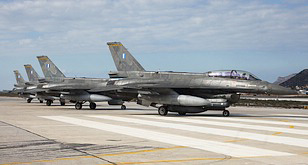
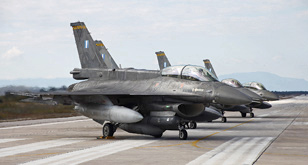
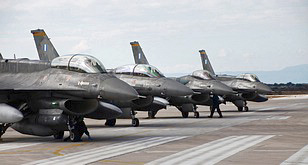
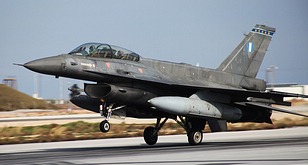
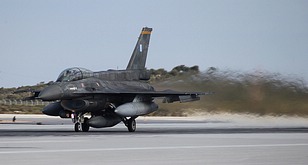
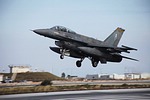
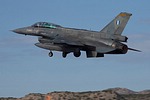
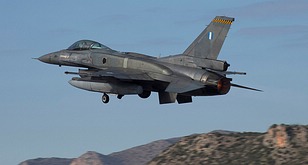
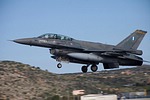
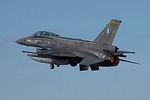
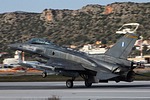
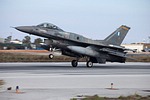
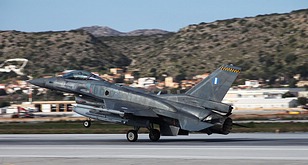
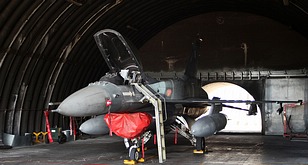
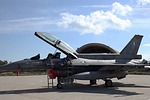
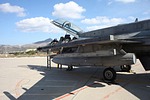
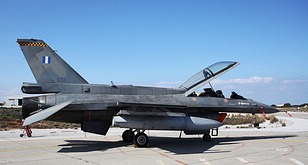
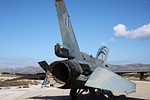
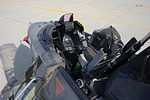
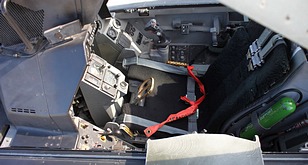
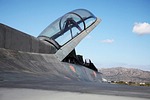
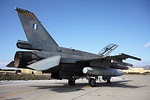
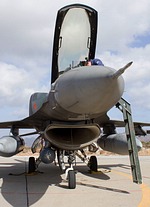
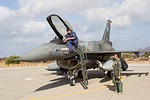
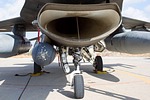
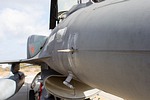
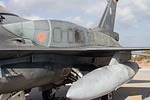
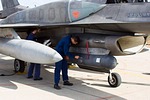
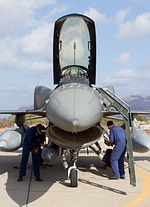
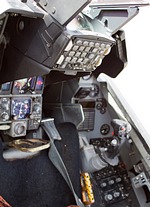
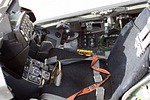
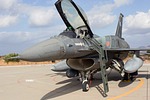
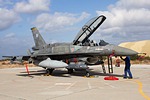
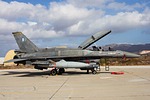
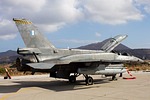
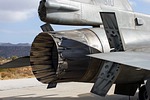
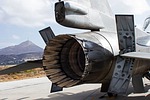
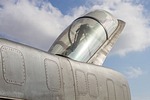
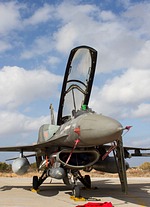
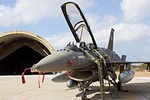
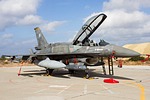
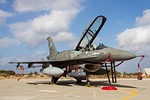
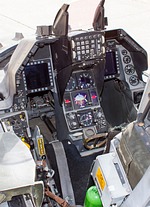
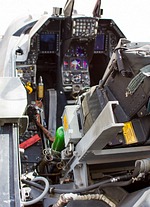
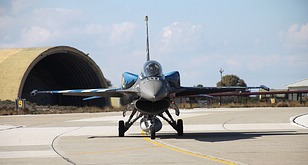
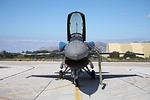
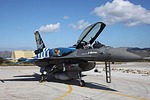
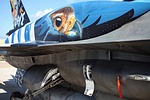
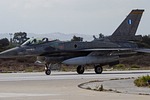
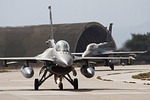
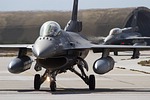
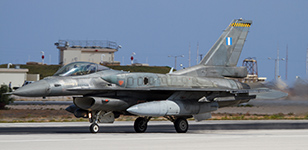
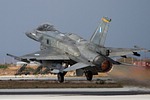
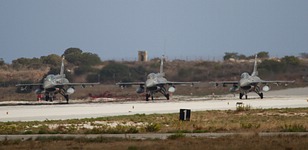
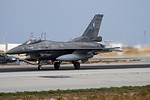
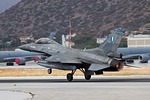
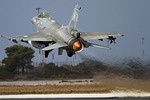
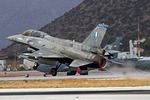
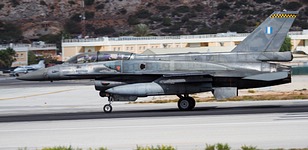
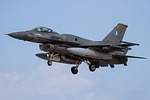
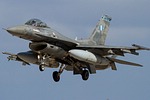
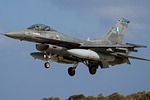
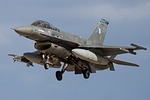
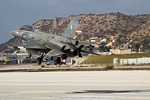
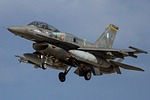
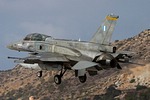
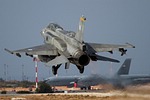
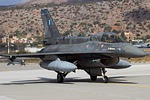
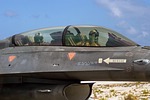
 Back to Index
Back to Index